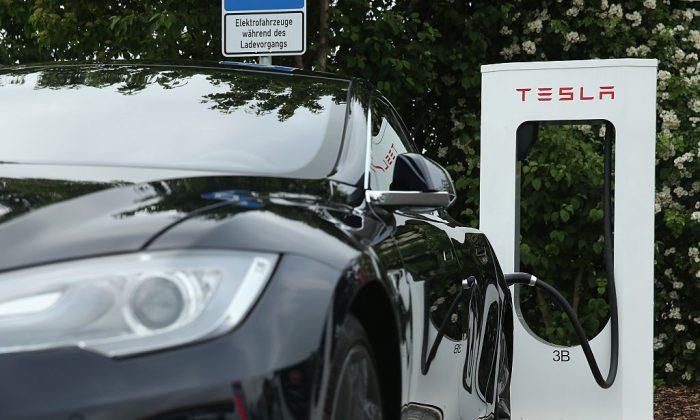People residing in member nations of the European Union will no longer be able to buy new cars that run on gasoline or diesel, according to a rule adopted by the European Council on March 28.
“The council today adopted a regulation setting stricter CO2 emission performance standards for new cars and vans,” the official statement reads. “The new rules set the following targets: 55 percent CO2 emission reductions for new cars and 50 percent for new vans from 2030 to 2034 compared to 2021 levels. One hundred percent CO2 emission reductions for both new cars and vans from 2035.”
The deal faced a hiccup when Germany—the bloc’s biggest car market and manufacturer—sought to extend new combustion-engine car sales beyond 2035 for vehicles running on synthetic fuels. A deal was reached late on March 24 that allowed for this exemption, providing a lifeline for conventional vehicles, although e-fuels aren’t currently produced at scale.
Rooting for biofuels, Italy tried to delay the vote but was unsuccessful. Biofuels are derived from plants, while synthetic or e-fuels are obtained from chemical processes based on hydrogen.
The Myth of Zero Emissions
The energy that’s expended to manufacture and power electric vehicles leaves a significant carbon footprint. Most legislators and activists focus solely on the carbon emitted from the vehicle exhaust while advocating for zero emissions, when, in reality, the cradle-to-grave calculation offers a vastly different picture.Energy is taken to mine for minerals used in electric vehicle components, transportation of the minerals, manufacturing of batteries, production of the vehicle, operating the vehicle and, finally, disposal of the components. Each step takes up considerable resources, with power derived primarily from fossil-fuel-based fuels.
The production of electric vehicle (EV) batteries generates twice as much carbon emissions when compared to traditional internal combustion engines. A typical electric car starts off with a larger carbon footprint than a gasoline-powered version, and it takes time before the vehicle catches up in terms of greenhouse gas emissions. The majority of lithium-ion battery production is concentrated in China, where coal-burning power plants provide electricity to factories.
“The lithium comes from one place, and it’s all processed in China. So just building the alternate processing infrastructure ... and by the way, we have to invade Russia, too ... just to get the materials to do EVs at scale is just laughable for the next decade,” geopolitical strategist Peter Zeihan said.
Saving the Planet Is Expensive
The average price of an EV in Europe during the first half of 2022 was 55,821 euros, up by more than 14 percent from 48,942 euros in 2015, according to a report by automotive market research firm JATO. An EV in Europe is 27 percent more expensive than a gasoline car. These factors raise an affordability challenge for the sector in a region where EV adoption is generally more accepted than in North America.Price increases make it difficult for the middle class to adopt the EV lifestyle. Besides, slowing production exacerbated by uncertainties about lithium supply has resulted in Europe outputting 12 million cars this year, a million less than earlier estimates.
In the United States, sales of electric cars rose by 66 percent in 2022 compared to the overall decline in auto sales by roughly 8 percent.
The European Council expects its latest policy change to reduce net greenhouse gas emissions by at least 55 percent by 2030 compared to 1990 levels and to achieve climate neutrality in 2050.
“I’m happy to see that the EU is delivering on its promises with the Fit for 55 package. The new rules will bring opportunities for cutting-edge technologies and create the momentum for industry to invest in a fossil-free future,” said Romina Pourmokhtari, Swedish minister for climate and the environment.





